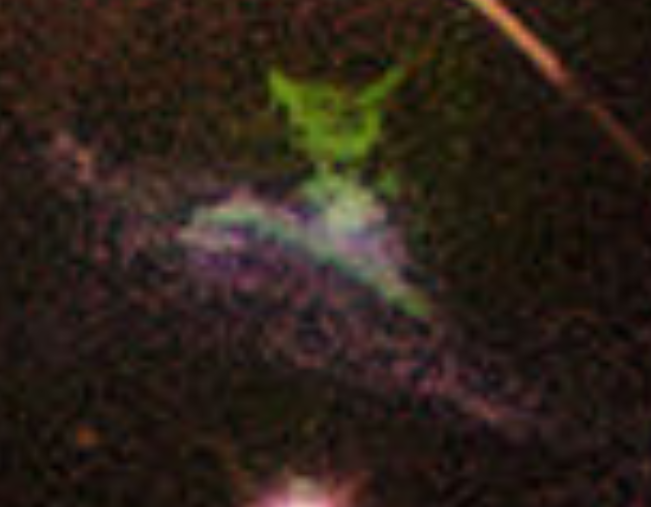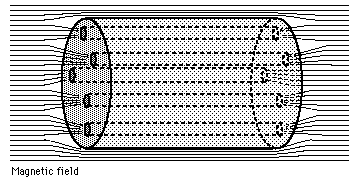A zoom in photo of Sparky (shown below) shows rapid star formation around the precursory galaxy core happens inside streaming spiral shaped filaments produced by supernovas in at least three layers of vortice rings.
 |
| Sparky zoom in photo by The Spacereporter.com |
Sparky is the first discovery to have both a stellar structure and the gas dynamics of a galaxy core. It is a scaled down model of a tiny galaxy without a black hole, being composed of ~400 billion solar masses. It is also a scaled up model of a supernova remnant where stars form inside evaporating gaseous globules, that collectively align together around near the galaxy core where most new massive stars form at very fast rates.
Before the discovery of Sparky, the largest known similar type stellar objects were Herbig-Haro objects, composed of two counterflow jets of streaming stars into a primordial core forming center, lasting just a few thousand years. Sparky is a far larger stellar like structure than Herbig-Haro objects.

Twin Jets
Sparky has an extremely low alpha lyman hydrogen redshift of only z=2.3 for what they describe as an early universe galaxy 11 billion light years away. The scientists believe there are hundreds to thousands more of similiar type "Sparky's" obscured by gas and dust that they haven't yet detected.
Redshifts are used to interpret cosmic distances, but only measure the single brightest emission of hydrogen atoms called alpha lyman hydrogen. In no way does this method produce accurate distance measurements, to be used exclusively to support the big-bang cosmology. Halton Arp is the real authority on these discordant redshift interpretations.
This animated sequence shows the sequence of events how Sparky formed by the collective interactive merging of supernova filamentary remnants or evaporating gaseous globules that are filled with streams of stars inside electrical charged plasma filaments on magnetized plasma bubbles within bubbles filling the universe:
This new superfluid cosmology is further explained in the paper Streaming Stars in Electrical Filaments
Sparky formed by many supernovas that produce star forming filaments called evaporating gaseous globules that streams stars on the bubbles around supernova remnants proven to align around the milky way galaxy.Supernova remnant
Evaporating gaseous globule seen around a supernova remnant.
Supernova bubbles
This collective phenomena produced by supernova remnants scales cosmic plasma to sizes from supernovas, to galaxies, up to galaxy clusters. Galactic magnetic fields align supernova remnants around the milky way in a thin plane. It is misinterpreted by big-bang believing cosmologists to be a supernova gravitational lens surrounding densely packed galaxy clusters.
This photo of Abel 370 galaxy cluster is already acceptably known to not be a gravitational lens, but instead a foreground evaporating gaseous globule filament that streams new stars.


























No comments:
Post a Comment